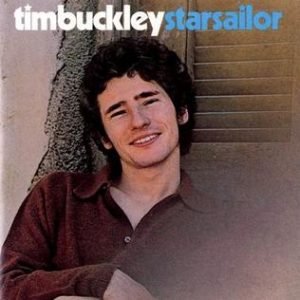By the time Starsailor arrived in 1970, Tim Buckley had already left the folk-rock comfort zone that defined his earlier albums. His journey from the melodic melancholy of Goodbye and Hello to the jazz-tinged introspection of Blue Afternoon hinted at a restless creative spirit. But Starsailor marked a sharp turn. This was not just an evolution; it was an artistic leap that few listeners saw coming.
In a musical landscape dominated by singer-songwriters refining the confessional tone of the late 60s, Buckley chose dissonance, abstraction, and vocal experimentation. While contemporaries like Joni Mitchell and Neil Young were polishing their lyrical intimacy, Buckley turned inward and outward at once. He stretched the limits of form and voice, drawing more from avant-garde jazz and 20th-century classical than from the folk scene where he began.
Sonic Exploration

Starsailor is a record where the sound itself becomes as expressive as the lyrics, and often more so. The production, led by Buckley and his longtime collaborator Herb Cohen, leans toward an organic and sometimes confrontational rawness. Rather than aiming for polished clarity, the album embraces a more open, spatial quality that suits its experimental edge. There’s a deliberate looseness in the way the instruments are recorded, giving the music a sense of volatility that feels closer to a live improvisation than a studio take.
The arrangements are unconventional throughout. Buckley’s voice becomes an instrument in its own right, often unmoored from traditional melody. On tracks like “Jungle Fire” and “Monterey,” he shifts from operatic wails to guttural growls in the space of a single phrase. Guitar lines, played by Bunk Gardner and Lee Underwood, veer between jagged bursts and eerie sustained tones, often backed by free-form drumming and the deep swell of upright bass. The use of vibraphone and other percussion adds to the spectral atmosphere, pushing the record further into avant-garde territory.
Genre-wise, Starsailor defies easy categorization. It’s rooted in jazz, but not in the smooth, modal sense. This is closer to free jazz and the boundary-pushing spirit of artists like Ornette Coleman or Albert Ayler. There are also elements of psychedelic rock, experimental classical, and remnants of Buckley’s folk background, though these are often obscured or transformed. The album doesn’t simply blend genres—it dismantles them and builds something new from the pieces.
This approach won’t resonate with every listener. The lack of structure can feel overwhelming, even alienating. But for those willing to let go of expectations, the sound world of Starsailor offers a strange and beautiful kind of freedom.
Lyrical Analysis

The lyrics on Starsailor are less about storytelling and more about mood and impression. Rather than following clear narratives, Buckley writes in a stream-of-consciousness style that mirrors the album’s musical freedom. This creates a lyrical experience that is abstract but deeply emotive, full of yearning, fragmentation, and inner turbulence.
Themes of isolation, desire, and transcendence run through the album, though they rarely present themselves in a direct way. On “Song to the Siren,” easily the most lyrically accessible track, Buckley channels ancient myth through modern longing. The imagery is vivid but elusive—waves, sirens, broken promises—all evoking a love that feels both unreachable and eternal. It’s a moment of poetic clarity in an album that otherwise trades in obliqueness.
Elsewhere, the lyrics are more cryptic. “Jungle Fire” and “Starsailor” plunge into surrealism, blending eroticism with existential dread. Buckley often favors sound over sense, choosing words for their sonic texture rather than their meaning. This approach can be alienating but also lends the album its unique voice. It feels like overhearing someone’s internal monologue during a fever dream—intimate, jarring, and hard to forget.
The emotional impact of these lyrics is amplified by Buckley’s vocal delivery. Even when the words are hard to decipher, the feeling comes through. There’s vulnerability in the way he stretches syllables, and a sort of madness in his improvisational phrasing. It’s not always easy to connect with what he’s saying, but you can often feel what he means.
Cohesion and Flow

Despite its chaotic energy and genre-defying experimentation, Starsailor holds together with a surprising sense of cohesion. The album doesn’t follow a linear narrative, but it does create a continuous emotional and sonic arc. Each track feels like a chapter in a fevered, dreamlike journey—sometimes serene, sometimes violent, but always connected by a shared emotional intensity.
The track progression is unpredictable but deliberate. Songs like “Come Here Woman” and “Monterey” open the record with jagged rhythms and vocal acrobatics that set the tone for what’s to come. As the album unfolds, it dips into more meditative territory with “Song to the Siren,” before plunging back into the chaos with “Jungle Fire” and the title track “Starsailor.” These shifts are dramatic, yet they don’t feel jarring. The transitions reflect the album’s emotional volatility and help maintain a sense of forward motion, even when the songs seem to unravel.
Thematically, the album stays grounded in ideas of longing, disconnection, and transcendence, even as the delivery changes shape. Whether Buckley is whispering or howling, there is a consistent urgency in his performance that threads the album together. The avant-garde style does push the boundaries of cohesion at times—some tracks feel almost like spontaneous sketches—but the overall arc is intact.
Standout Tracks and Moments
While Starsailor thrives as a complete experience, several tracks stand out for their emotional clarity or daring execution.
Song to the Siren
“Song to the Siren” is the most accessible and arguably the most haunting piece on the album. Stripped down to just Buckley’s voice and a delicate guitar, it feels almost suspended in time. The song’s gentle melody and mythic lyrics form a stark contrast to the surrounding chaos, giving the record a quiet anchor. It’s no surprise this track has become one of his most covered and revered works.
Jungle Fire
“Jungle Fire” is another highlight, but for entirely different reasons. The song erupts with fractured rhythms and intense vocal improvisation. Here, Buckley sounds completely unrestrained, howling and stretching his range to near-breaking point. It’s a moment that captures the spirit of the album—disorderly, raw, and emotionally charged.
Starsailor
The title track, “Starsailor,” is perhaps the most experimental and challenging. With its swirling saxophones and near-wordless vocalizations, it ventures into territory closer to sound art than traditional song. Yet within this chaos, there are fleeting moments of beauty—brief pauses, unexpected harmonies, and sudden shifts that feel almost cinematic.
Monterey
One of the album’s most memorable moments comes in “Monterey,” where Buckley lets his vocals fall apart into gasps and cries. It’s uncomfortable to hear, but undeniably powerful. These are not polished performances designed to soothe. They are raw transmissions of feeling, where even silence or breath becomes part of the composition.
Artistic Contribution and Innovation

Starsailor holds a unique place in both Tim Buckley’s catalog and the broader landscape of 1970s music. At a time when the singer-songwriter genre was gaining mainstream traction through polished, introspective records, Buckley veered sharply into avant-garde territory. The album wasn’t just ahead of its time—it was out of time altogether, refusing to align with commercial trends or even the expectations set by his earlier work.
In terms of genre, Starsailor operates in the margins. It borrows from free jazz, experimental rock, and abstract folk, but it doesn’t belong fully to any of them. That refusal to settle is what makes the album innovative. Few artists of the era were willing to deconstruct the very form of the song as Buckley does here. He replaces linear narrative with impressionistic fragments, and conventional melody with extended vocal improvisation. These choices weren’t just stylistic; they were radical rejections of mainstream constraints.
The album’s innovation is most evident in its use of the voice. Buckley doesn’t treat vocals as a vehicle for lyrics but as an instrument with its own tonal and emotional range. This idea wasn’t common in popular music at the time, and it anticipated vocal experiments that would surface in genres like art rock, no wave, and even contemporary avant-pop. In this way, Starsailor helped expand the vocabulary of what a voice could express.
Closing Thoughts

Starsailor is a fearless and often unsettling album, one that challenges the very idea of what a song or a singer can be. Its greatest strength lies in its refusal to compromise. Tim Buckley doesn’t just push boundaries—he tears them down. The record’s emotional depth, combined with its sonic daring, creates a listening experience that is as rewarding as it is demanding.
At the same time, that very ambition can be a barrier. The lack of conventional structure, the abstract lyrics, and the jarring transitions will alienate some listeners. Even fans of Buckley’s earlier work may struggle to find footing here. It’s not an album that invites passive listening. It requires patience, openness, and sometimes repeated exposure before its brilliance fully emerges.
Yet when it does, it leaves a lasting impression. Tracks like “Song to the Siren” offer moments of beauty that feel timeless, while pieces like “Jungle Fire” showcase Buckley at his most inventive and unrestrained. These highs more than justify the album’s more difficult stretches, especially when viewed in the context of an artist reaching for something beyond recognition.
As a whole, Starsailor stands as a bold outlier in Buckley’s career. It may not be the most accessible entry point into his discography, but it is perhaps the most revealing of his artistic ambition. For those willing to meet it on its own terms, the album remains a powerful, transformative experience.
Official Rating: 8/10
This score reflects the album’s artistic bravery, emotional depth, and lasting influence, while acknowledging that its experimental nature may limit its reach. It’s not a perfect album, but it’s an essential one—messy, beautiful, and entirely its own.
